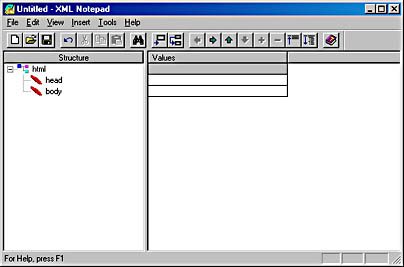
Represents an interface that can be implemented by classes providing streams. Represents an application resource stream resolver.Ĭontains properties and methods that when implemented by a XmlDictionaryWriter, allows processing of XML fragments.Įnables a class to return an XmlNode from the current context or position. The XmlXapResolver type is used to resolve resources in the Silverlight application's XAP package. Specifies a set of features to support on the XmlWriter object created by the Create method. Represents a writer that provides a fast, non-cached, forward-only way to generate streams or files that contain XML data. Represents white space in element content. NET Framework 2.0, we recommend that you use the XmlReaderSettings class and the Create method to create a validating XML reader. Represents a reader that provides document type definition (DTD), XML-Data Reduced (XDR) schema, and XML Schema definition language (XSD) validation. NET Framework 2.0, we recommend that you use the XmlWriter class instead. Represents a writer that provides a fast, non-cached, forward-only way of generating streams or files containing XML data that conforms to the W3C Extensible Markup Language (XML) 1.0 and the Namespaces in XML recommendations. NET Framework 2.0, we recommend that you use the XmlReader class instead. Represents a reader that provides fast, non-cached, forward-only access to XML data. Represents the text content of an element or attribute. This is also referred to as significant white space. Represents white space between markup in a mixed content node or white space within an xml:space= 'preserve' scope. Helps to secure another implementation of XmlResolver by wrapping the XmlResolver object and restricting the resources that the underlying XmlResolver has access to. Resolves external XML resources named by a Uniform Resource Identifier (URI). Specifies a set of features to support on the XmlReader object created by the Create method. Represents a reader that provides fast, noncached, forward-only access to XML data. Represents a processing instruction, which XML defines to keep processor-specific information in the text of the document. Provides all the context information required by the XmlReader to parse an XML fragment. Represents a notation declaration, such as. Represents a reader that provides fast, non-cached forward only access to XML data in an XmlNode. Represents an ordered collection of nodes. Provides data for the NodeChanged, NodeChanging, NodeInserted, NodeInserting, NodeRemoved and NodeRemoving events. Represents a single node in the XML document. Resolves, adds, and removes namespaces to a collection and provides scope management for these namespaces. Represents a collection of nodes that can be accessed by name or index. Gets the node immediately preceding or following this node. Returns detailed information about the last exception.ĭefines the context for a set of XmlDocument objects. Represents an entity declaration, such as. Provides extension methods for the XmlDocument and XmlNode for document navigation. Represents the document type declaration. Represents a lightweight object that is useful for tree insert operations. You can use this class to load, validate, edit, add, and position XML in a document.
Xml notepad deutsch windows#
Represents an abstract class that Windows Communication Foundation (WCF) derives from XmlWriter to do serialization and deserialization. Represents an entry stored in a XmlDictionary. Implements a dictionary used to optimize Windows Communication Foundation (WCF)'s XML reader/writer implementations.Īn abstract class that the Windows Communication Foundation (WCF) derives from XmlReader to do serialization and deserialization.Ĭontains configurable quota values for XmlDictionaryReaders.

When converting data types, the values returned are locale-independent.Īllows structured data to be stored, retrieved, and manipulated through a relational DataSet. Represents the content of an XML comment.Įncodes and decodes XML names, and provides methods for converting between common language runtime types and XML Schema definition language (XSD) types. Provides text manipulation methods that are used by several classes. Represents a collection of attributes that can be accessed by name or index.Įnables optimized strings to be managed in a dynamic way.Įnables using a dynamic dictionary to compress common strings that appear in a message and maintain state. Valid and default values for the attribute are defined in a document type definition (DTD) or schema. Implements a single-threaded XmlNameTable. Provides standards-based support for processing XML.


 0 kommentar(er)
0 kommentar(er)
